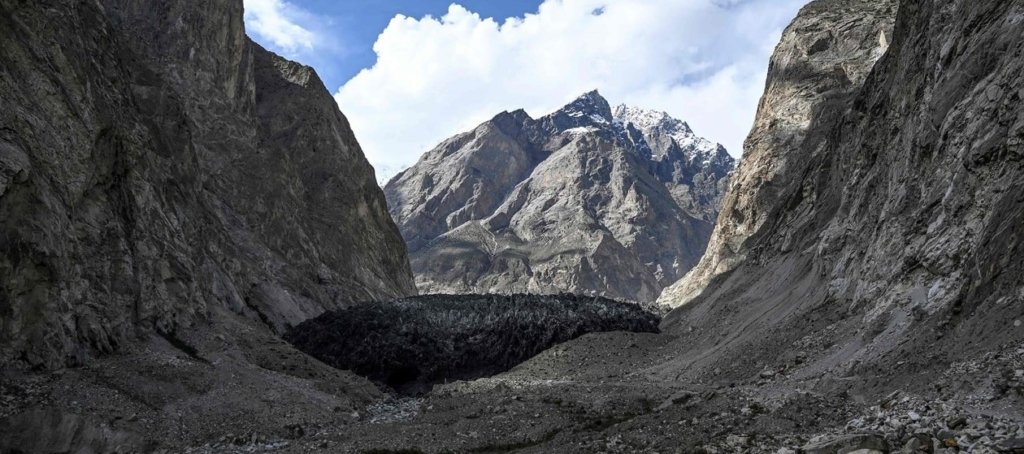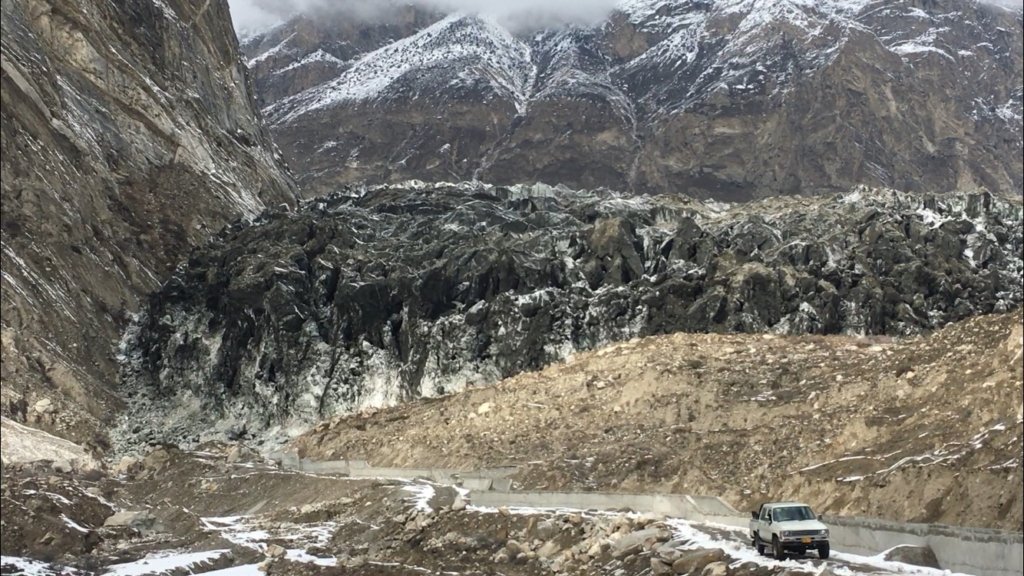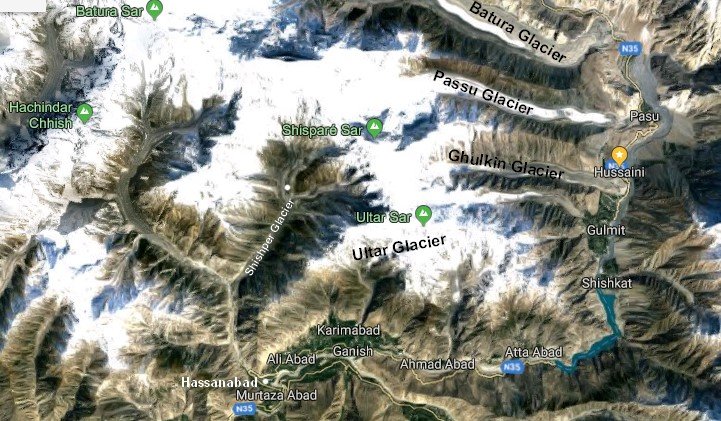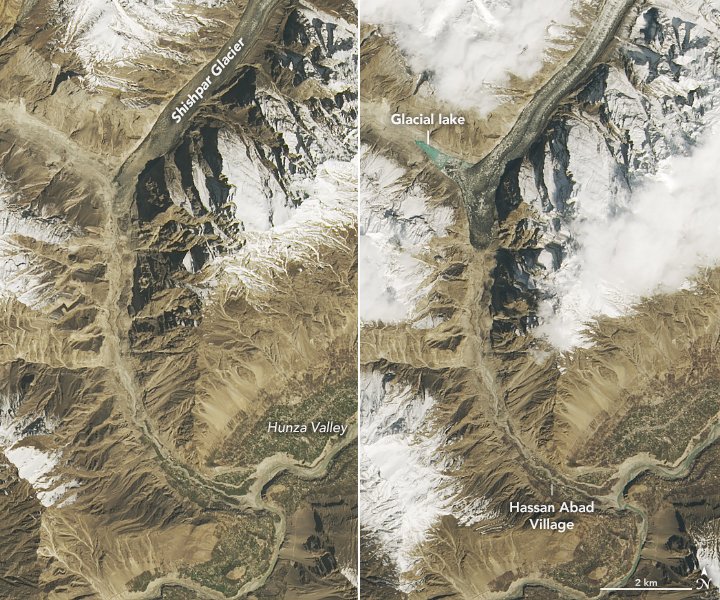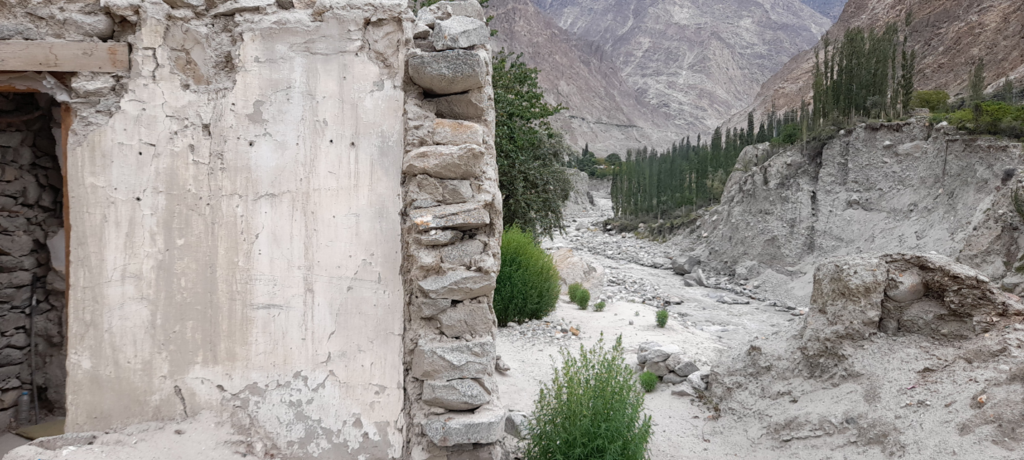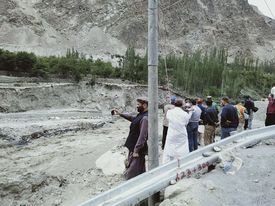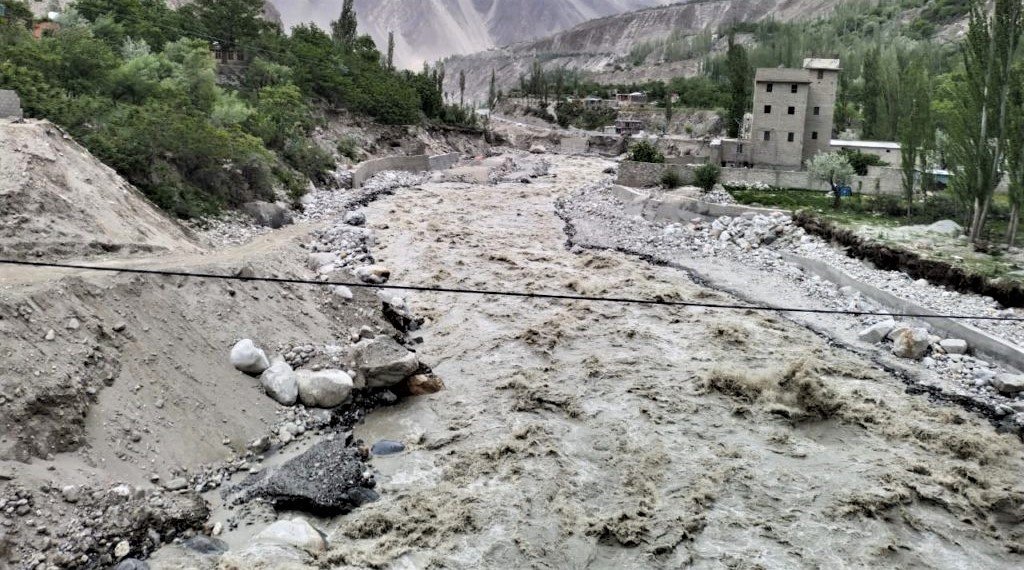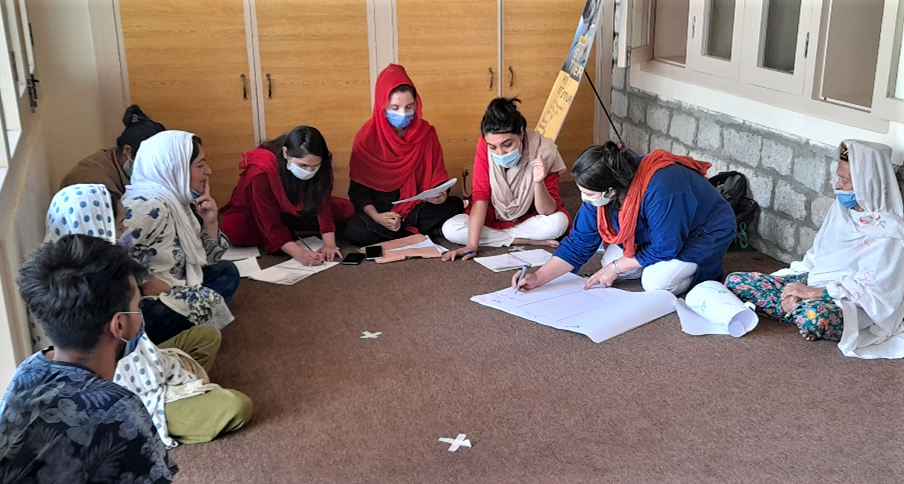By KOSAR BANO & CHIMI SELDON
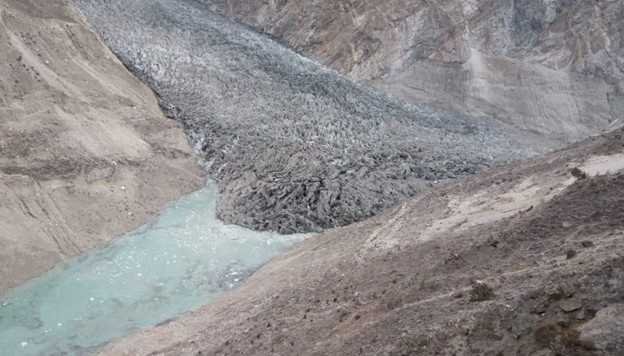
Mountain communities are living with the risks and impacts of steady glacial surges, vagaries of weather patterns and increased incidences of cryosphere-related hazards. The impacts of these hazards are not just limited to the destruction of properties; they also pose potential risks to the lives and livelihoods of the mountain communities; they manifest in the social structures exacerbating inequalities. Consequently, women and vulnerable groups bear the brunt of these changes.
The responsibilities of women increase manifold during and after disasters. This phenomenon was evident at Hasanabad, a settlement nestled on a glacio-fluvial terrace at some 2,100 metres above sea level (masl), four kilometres down the stream of Shisper Glacier.
In this essay, we will discuss how vagaries in weather patterns and disasters compound the vulnerability of mountain communities and exacerbate the existing inequalities, disproportionately affecting women, children, and vulnerable groups, including persons with disabilities, the elderly, and those with small landholdings.
The glacier surges
Glacier surge is a common occurrence in Hunza located in the Karakoram Mountain Range. The abnormal changes in glacier behaviour — such as the Shisper Glacier that blocked the proglacial river flowing from the Machuhar Glacier and formed an ice-dammed lake – are unpredictable and sporadic, which makes them riskier. The Shisper Glacier lake has outbursted several times since 2018, with the most recent taking place in May 2021.
Climate change and gender inequalities
To get a sense of the issue the people were facing in the wake of the disaster, we organized a focus group discussion in the village. Participating community members, the majority of whom were women, complained of back problems probably because of fetching water from a far off distance.
They also spoke about how the responsibility of cleaning up after floodwaters inundated homes and damaged cattle sheds.
Social stratification
Villages like Hasanabad follow deep-rooted traditional social structures where men and women have predetermined roles and responsibilities at both household and societal levels: Men make the decisions, inherit and control assets; women take care of children and the elderly, tend to cattle, fetch water, and prepare food.
Such a social stratification has contributed to multilayered social inequality. Women are dependent on husbands and/or male family members. When recovering from damages and losses during disaster events, they are not able to apply for loans on their own. Such factors, inevitably, entrench their dependence on male family members.
The majority of those who wield power – religious figures, politicians and social workers – are men. As such, they have considerable decision-making powers. The only flood warning system in Hasanabad, installed by the Meteorological Department of Gilgit Baltistan, is managed and maintained by men. As a result, only men are privy to crucial data and information. Moreover, not much effort is made to take women in the loop and spend resources on data processing and information sharing that could save lives.
During the May 2021 GLOF, Sher Bano, who is in her 50s, was cutting grass by the riverside. She had not received information about the impending flood risk. Although she was rescued by volunteers and reunited with her family, timely information could have saved her the anxiety and stress she had to endure. Had the early warning been communicated timely and efficiently, the risk to Bano’s life could have been reduced greatly.
Post-disaster recovery and management
Government and non-governmental organizations are working to support communities like those in Hasanabad. The Pakistan Meteorological Department carries out regular glacier monitoring activities on the Shisper Glacier. The department has also conducted a vulnerability assessment of downstream communities and used the exercise to identify safe zones and routes and organized mock drills for community members to prepare them for the disaster events.
The creation of disaster response groups such as the Gilgit-Baltistan Disaster Management Authority (GBDA), the Aga Khan Agency for Habitat (AKAH), the GLOF-2 project of the United Nations Development Programme (UNDP), and the Gilgit-Baltistan Rural Support Program (GBRSP) are initiatives in the right direction.
These groups organize frequent training programmes on disaster response and management for community members and provide loans to those affected by disaster events. However, most participants are men, and post-disaster recovery planning, management, and other activities inadvertently reflect a gender bias.
In the aftermath of the May 2021 GLOF, affected communities lived in damaged houses, emergency shelters were congested, and there was a lack of basic facilities (including suitable kitchen and toilet facilities). The inclusion of women – who are more in tune with the everyday realities of managing households – in post-disaster recovery decision making might have made a difference.
Despite the frequent threat of GLOFs from the Shisper Glacier surge, concerted action to safeguard the lives of communities living close to the riverbanks is yet to be taken. A lack of funds and coordinated efforts from responsible agencies seems to be the main challenge. It has become common practice for community members to move into their relatives’ houses in neighbouring villages every summer when the risk of flooding heightens. However, this is not a solution.
There is a need to develop institutional mechanisms to ensure that no one has to live in tents on riverbanks and roadsides that are at risk of flooding, collapse, and erosion.
Opportunities for intervention
As threats from a changing climate are ever-increasing for mountain communities, there is a need for proper disaster response, recovery, and rehabilitation plans. In this regard, the recent developments at Hasanabad are encouraging. There are several disaster-response groups now working with the community. However, to be truly effective, there is a need for making the plan inclusive and considerate from social and gender dimensions.
Mountain communities are often located in remote and inaccessible valleys making it difficult for relief efforts to reach there on time. All interventions must prioritize gender and social inclusivity keeping in mind the remoteness and social conditions. Such interventions could start from the basics.
Gender sensitization training, for instance, could be organized for families, including men, to educate them on how discriminatory cultural and social norms based on gender compound poverty and other vulnerabilities. Such training sessions could focus on behavioural changes and encourage sharing of responsibilities among men and women in care-related activities.
There is also a need to encourage stakeholders to create favourable conditions for women to partake in the decision-making and implementation processes. Encouraging representation of the affected women and vulnerable groups in the decision-making process for response and recovery, particularly during food distribution, identification and assessment of damages, will ensure that their needs are met. Furthermore, efforts to ensure property/asset rights to women, such as allocating land to women in new placement areas, will make rehabilitation sustainable.
This article was first published in ICIMOD online magazine.

Kosar Bano is a Gender and Adaptation Specialist at ICIMOD

Chimi Seldon is a Communication Officer at ICIMOD


